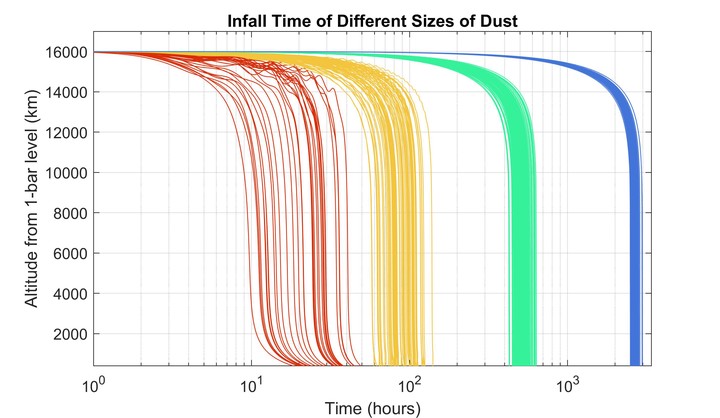Infalling of Nano-dust Because of Air Drag on Uranus
 Image credit: Shih & Ip, 2023.
Image credit: Shih & Ip, 2023.
Abstract
Uranus and Saturn share similarities in terms of their atmospheric composition, which is primarily made up of hydrogen and helium, as well as their ring systems. Uranus has 13 known rings, which are divided into narrow main rings, dusty rings, and outer rings. Unlike Saturn’s broad ring system, Uranus’ inner narrow main rings are relatively narrow, and likely consist of dark, radiation-processed organics that range from centimeters to meters in size. We assume that Uranus may have a mechanism similar to Saturn where tiny particles fall on-to the planet due to its gravity and the dragging force of the upper atmosphere. The uncharged nano-dust particles in Uranus’ inner narrow rings will collide with neutral gas molecules in the exosphere and fall onto the planet. This work derives a Monte Carlo simulation of the orbital behavior of nano-dust particles in the inner narrow rings of Uranus. The model shows that the braking of the dust grain motion takes place at altitudes between 6000 km and 8000 km, and the dust particles are gradually captured into corotation with the planetary atmosphere below 4000 km altitude. The larger the dust particles are, the lower the altitude at which they will be assimilated into co-rotation. The lifetime of 1-nm dust particles to 1000 km-altitudes is estimated to be about 32.5 ± 18.8 h, and that of 30 nm is about 2770.0 ± 213.9 h.